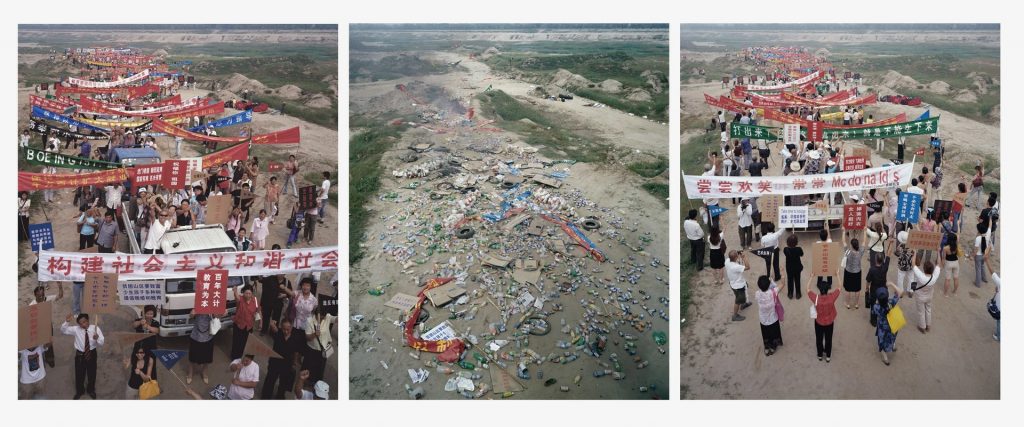
The contemporary artist Wang Qingsong (Chinese, b. 1966) creates elaborately staged large-format photographs that focus on the dramatic social, political, and cultural changes in China in the post-Mao era. A native of Heilongjiang province in the far northeast of China, Qingsong studied painting at the Sichuan Art Academy, turning to photography in the 1990s, garnering almost immediate international acclaim. Born at the onset of the Cultural Revolution (1966-1976), Qingsong has said that his image-making has its source in the propaganda images of his youth.
Qingsong’s 2005 triptych Come! Come! Come!, on view in the Stafford Gallery this spring, both documents and comments upon the embrace of capitalism and the rapid Westernization of China in the 1990s through the early 2000s. Banners emblazoned with contemporary and historic slogans from Chinese politics and history (on the left) are mirrored by those from Western and Chinese businesses such as FedEx, McDonald’s, and China Mobile (on the right). At the center is the detritus left behind by these mass “demonstrations,” the environmental cost of economic progress.
Much like the producer of a movie spectacular, Wang Qingsong coordinated the actions of the approximately 800 models featured in the work, transporting them and the props (painted by Qingsong himself) to a site on the outskirts of Beijing, where the photographs were taken during the course of a single day.

Come! Come! Come!
2005
Wang Qingsong
C-print
Gift of Drs. Joy and Howard Osofsky, 2022.180.a,.b,.c.